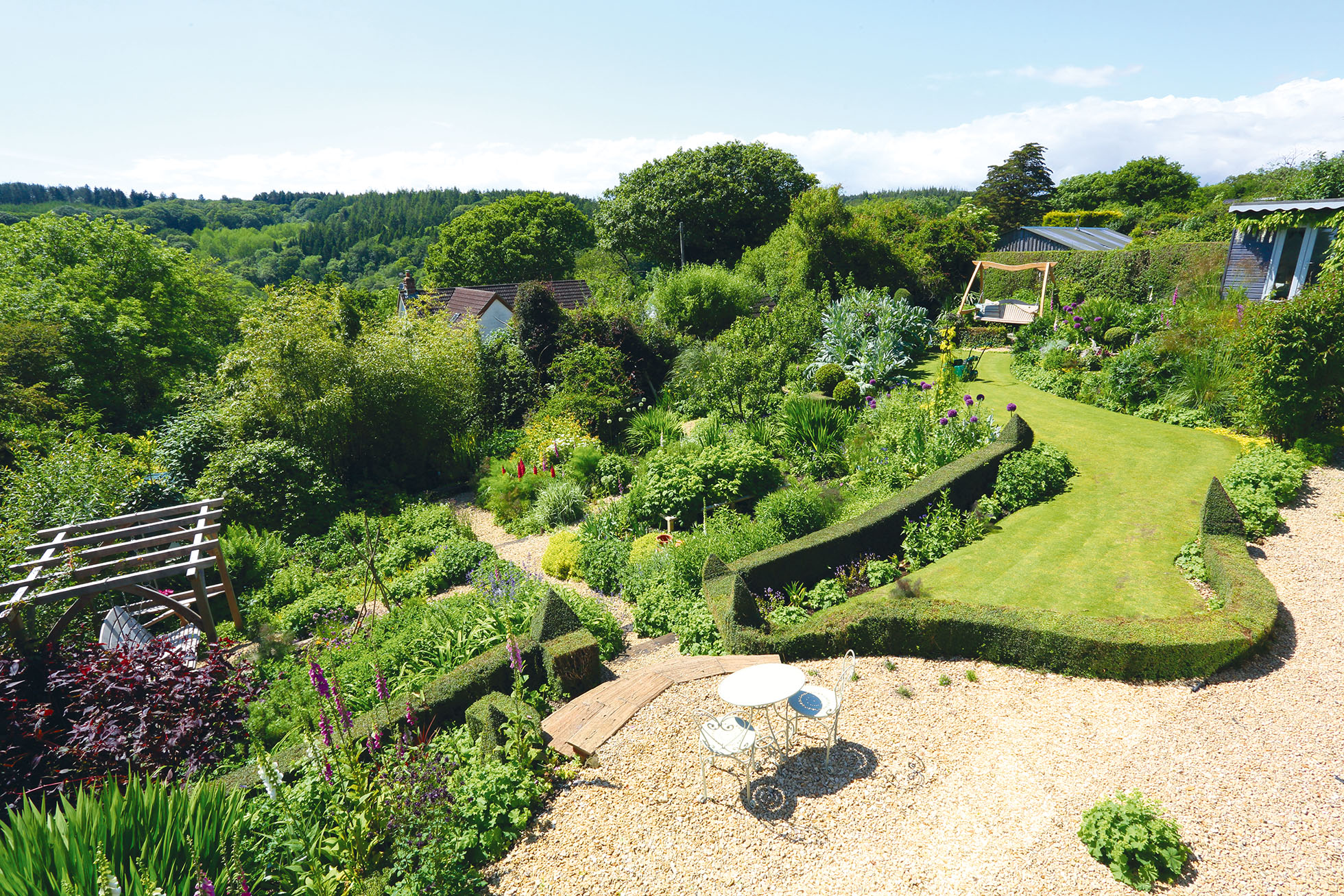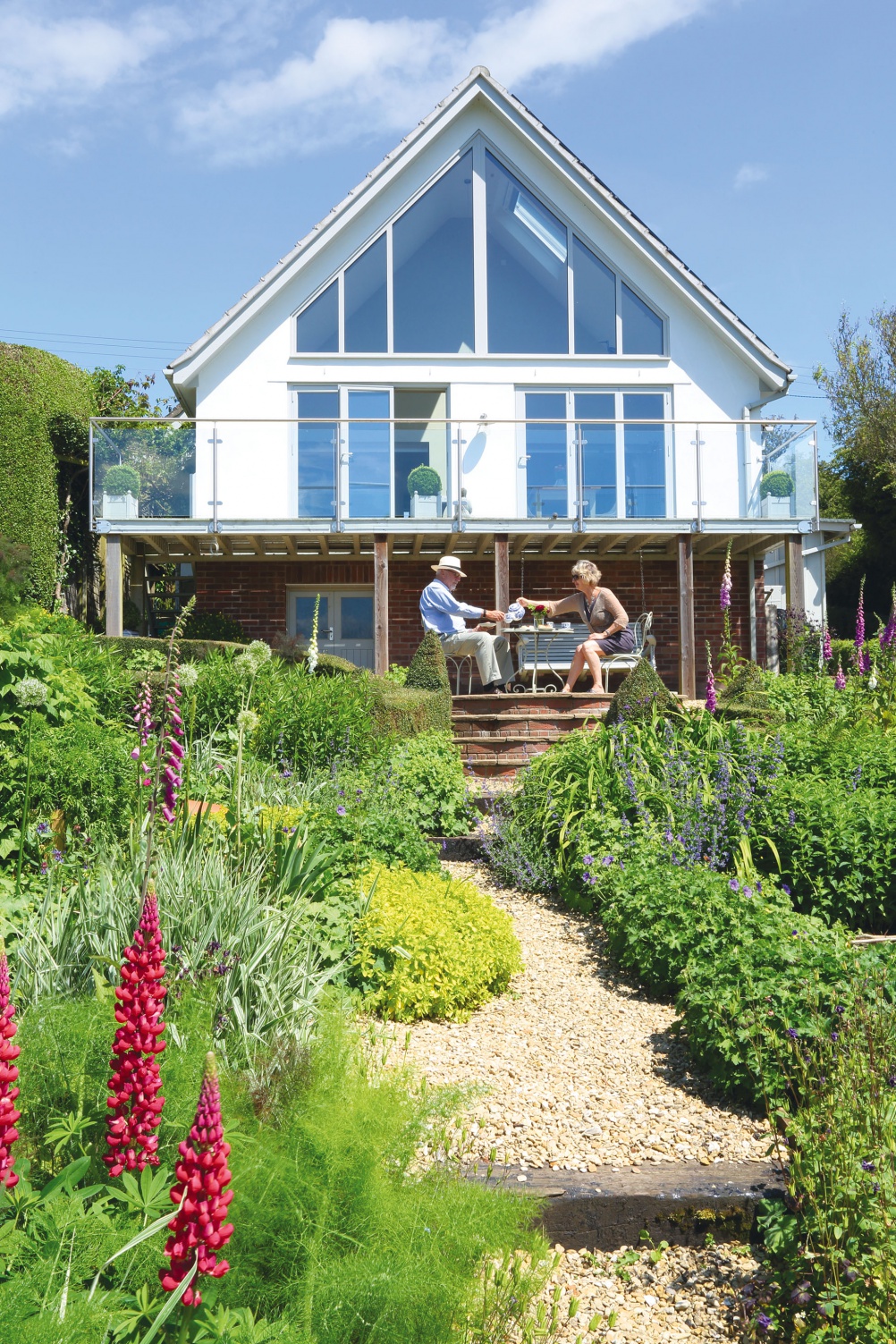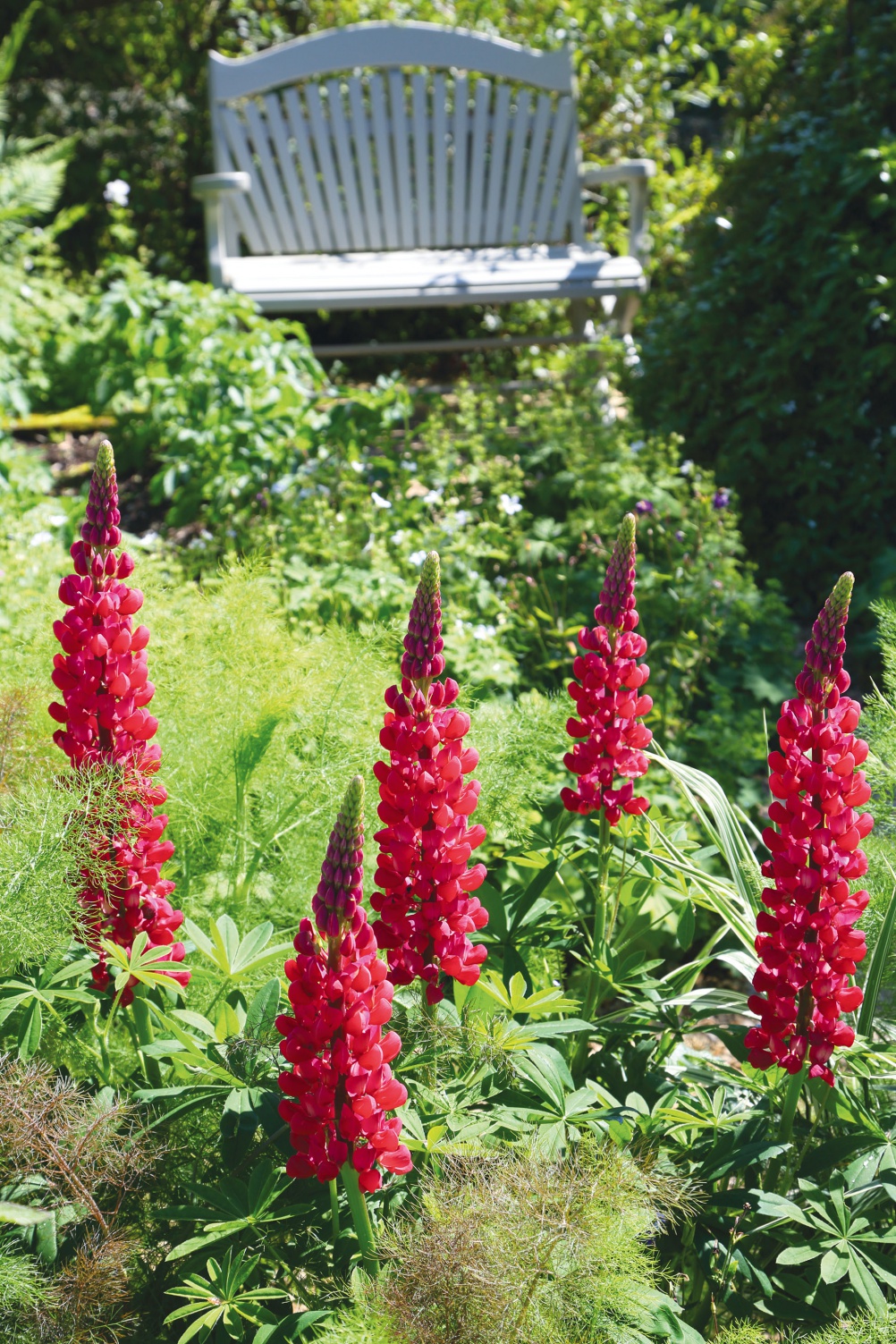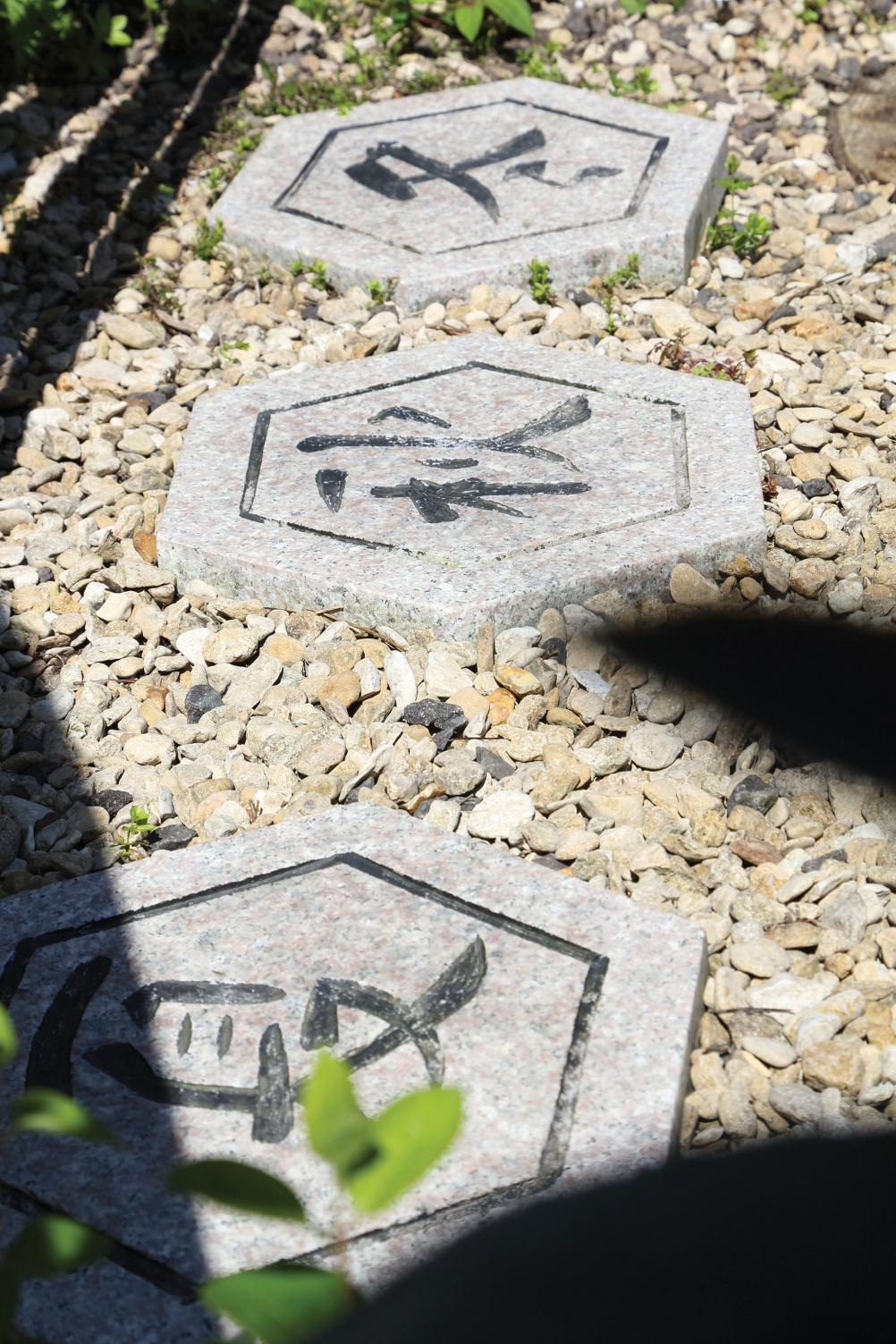Real garden: creating a garden to relax in
With its curved lawn and pretty seating areas, Martin and Celia Young's stunning garden is unrecognisable from the empty plot they started with

The day Celia and I came to view this house is one I won’t forget,’ explains Martin.
‘When we walked around the back of the newly built property, we were blown away by the breathtaking view of the nearby woods. The icing on the cake was the plot – it was a former paddock, offering us a blank canvas that was crying out to be turned into something very special.’
The Youngs couldn’t believe their luck at finding a house in such an idyllic spot, with a garden that offered so much potential. ‘One of my childhood ambitions was to create a garden from scratch and this was the perfect opportunity,’ says Martin.
Find out what they did next, then browse more real home transformations and find out how to plan, design and cost your garden transformation.

Having bought the house, the couple contacted landscape architect Ed Brooks, and they began discussing ideas about how to create the garden. ‘We wanted it to look, smell and feel good,’ says Celia. ‘We weren’t overly concerned about year-round interest – we wanted it to have wow-factor from spring to autumn, but particularly in the summer, when we’d be making the most use of it.’
Find out how to employ a garden designer.

The couple’s original brief included creating large, deep borders that could be filled with herbaceous perennials, a section of lawn, a pond and four raised beds where Martin could grow vegetables. ‘Ed and I agreed that terracing this sloping site made sense,’ says Martin. ‘His father, Dave, then arrived to dig out the large amounts of earth to create the shape we wanted.’
Get small space home decor ideas, celeb inspiration, DIY tips and more, straight to your inbox!
Having a background in carpentry, Martin had no qualms about playing a hands-on role in the hard landscaping. ‘We decided to give one corner of the garden a seaside theme and, after buying a Charmouth beach hut, I created some decking in front, as well as wooden steps and various beds and paths,’ he explains.

Planting the garden
More from Real Homes

Get inspiration, ideas and advice straight to your door every month with a magazine subscription
The original planting included mainly herbaceous perennials and shrubs ranging from Acanthus mollis (Bear’s breeches) to Choisya ternata (Mexican orange blossom), Phyllostachys aurea (Fish-pole bamboo) and Viburnum tinus (Laurustinus), plus several fruit trees. Keen to create a pristine lawn, Martin decided to splash out on quality turf. ‘An immaculate lawn was a priority,’ he says. ‘It’s a labour of love, but definitely worth it. Every year the lawn gets a proper top dressing and is scarified, spiked and fed. With all the attention it has received, the lawn has probably risen by a couple of inches since we moved here!’
Although the Youngs were delighted with their newly planted garden, in 2000, having gained the Royal Horticultural Society’s (RHS) Certificate of Horticulture, Martin began to see it from a different perspective. ‘Having discovered the importance of form, texture and colour, our garden seemed too formal and simply not “free” enough. With that in mind, I started trusting our herbaceous perennials to self-set, letting them run through the winter, which led to some interesting planting combinations.’
Four years later, another chapter unfolded when Martin was faced with a serious health scare. ‘At that stage I was working as an account manager, travelling 40,000 miles a year around the UK,’ he says. ‘Having been told by my doctor that my chances of living weren’t looking great unless I radically changed my lifestyle, I resigned from my job that day.’

Incorporating Feng Shui principles
In a bid to become fitter and healthier, Martin developed an interest in meditation and Feng Shui – disciplines that were soon to impact on both his life and the garden. ‘I decided to implement the principles of Feng Shui, moving plants to coincide with the colour wheel – for instance, placing the pinks and whites to the west,’ he explains.
With more time on his hands, Martin decided to establish whether the garden might be suitable for inclusion in the National Gardens Scheme (NGS). ‘At a third of an acre, it’s not that large but I felt it would be of interest to visitors,’ he says. ‘Although the lady from the NGS agreed, she said that it needed some seating so that people could linger a little longer.’
Crafting the garden seating
As it happened, Martin had started considering buying some additional garden furniture, although his research hadn’t proved particularly inspiring. ‘I couldn’t find anything that was good quality, comfortable and made sustainably,’ he explains, ‘so I decided to take matters into my own hands.’
Having sent for a swing seat blueprint from America, Martin made a prototype and then another, complete with a personalised inscription. ‘The next year turned into a total whirlwind,’ says Celia. ‘With two new seats in situ, not only did our garden get the NGS seal of approval, but we kept being asked where we bought the furniture. Orders for swing seats started flooding in, so we launched our company.’
Latest changes
In recent years, the garden has been tweaked as it’s become a showcase for the couple’s furniture as well as a tranquil spot where they can unwind. ‘We now have six different swing seats in the garden, so we’ve plenty of choice as to where we sit, depending on the time of day,’ Martin says.
Find out how to choose garden furniture.
New additions to the garden include more durable gravel paths, replacing the former bark chippings, a pergola adding extra interest over one of the swing seats, plus a roomy summerhouse that has replaced the beach hut, which has been relocated to another corner of the garden. ‘The summerhouse is where Celia makes all the cushions for our swing seats, and it doubles up as handy guest accommodation, too,’ says Martin.
In terms of planting, the most notable change has been the introduction of the striking Cynara cardunculus (cardoon) and evergreen Stipa gigantea grass, plus the appearance of blue cornflower, which has self-set in various areas. The seats have also been underplanted with sweet woodruff.
‘If, back in 1998, someone had said to me that I’d create a garden that flows like this, I honestly wouldn’t have believed them,’ says Martin. ‘By having faith in the plants to self-set and group themselves, nature has taken over and I love the way our garden has evolved. When Celia and I find the odd moment to sit down and relax, there’s nowhere we’d rather be than this peaceful sanctuary.’